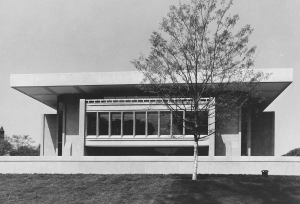Embarking on a new chapter in 1993, Syracuse University’s S.I. Newhouse School of Public Communications founded the Military Motion Media Program (MMM). Sponsored by the Department of Defense (DoD), this program stands as a testament to the institution’s dedication to service members. Since its inception in 1963, the MMM Program has played a vital role in training military photographers and videographers, evolving over the years to meet the dynamic needs of the industry.

The roots of the MMM Program can be traced back to the Military Visual Journalism Program (MVJ), initiated in 1963. Initially designed to elevate Navy photojournalists to match their civilian counterparts, the program quickly gained popularity, attracting participants from various branches of the military. Over its first 25 years, MVJ primarily focused on photojournalism, photography, law, and writing. In 1993, recognizing the changing landscape of media, a motion media track was introduced, marking the birth of the Military Motion Media Program.
“This program is for enlisted service members, some on the cusp of making military service a career and some have already made that commitment,” says retired Col. Ron Novack, executive director of the Office of Veteran and Military Affairs. “We make sure that they are part of the Orange family and our office helps to create that sense of belonging.”
For nearly six decades, Syracuse University has been preparing service members to tell impactful stories through imagery and video. The 10-month program welcomes active-duty personnel and has graduated over 1,000 military professionals. The program’s alumni have gone on to successful careers in the military, television, the Pentagon, and other media outlets.
Syracuse University’s commitment to veterans runs deep, dating back to Chancellor William Tolley’s role in drafting the GI Bill in 1944. The Military Motion Media Program is one of several military-connected programs that emerged from Tolley’s vision. The program ensures that enrolled service members become part of the “Orange family,” fostering a sense of belonging and community.
In the early 1990s, the Military Motion Media concentration was introduced to address the cinematography side of storytelling. Students create short films and documentaries, refining their broadcast journalism skills. Nowadays, the program not only teaches photography but also emphasizes the importance of understanding headline news. Department of Defense spokesperson U.S. Navy Lt. Cmdr. Arlo Abrahamson, who graduated from Syracuse University’s journalism program in 2005, praises the program for transforming the way students think about communication through photography and writing.
Over the six decades of the Motion Media Program’s history, we have witnessed the birth of numerous outstanding military storytellers. Chancellor William Tolley’s foresight, the diligent guidance of countless Newhouse faculty, and Syracuse University’s military-friendly, opportunity-filled campus have all contributed to the continuous improvement of MMM. With all these factors in play, the future looks promising.
In forthcoming articles, we’ll delve deeper into pivotal moments from SU’s timeline, unraveling the interconnected web of history that defines the University’s enduring legacy in supporting veterans and military students. Stay tuned for more insights into SU’s remarkable journey.
